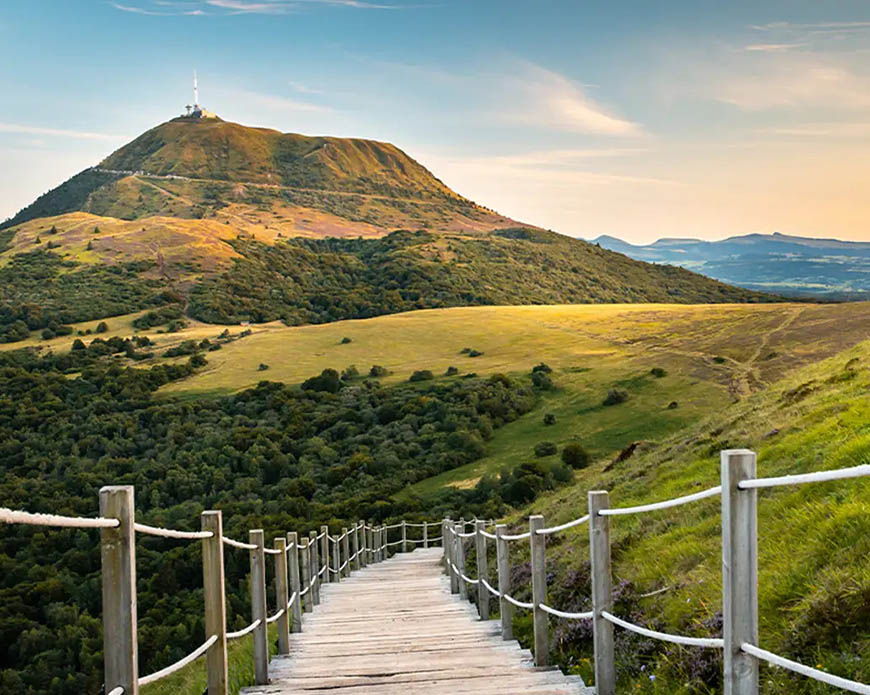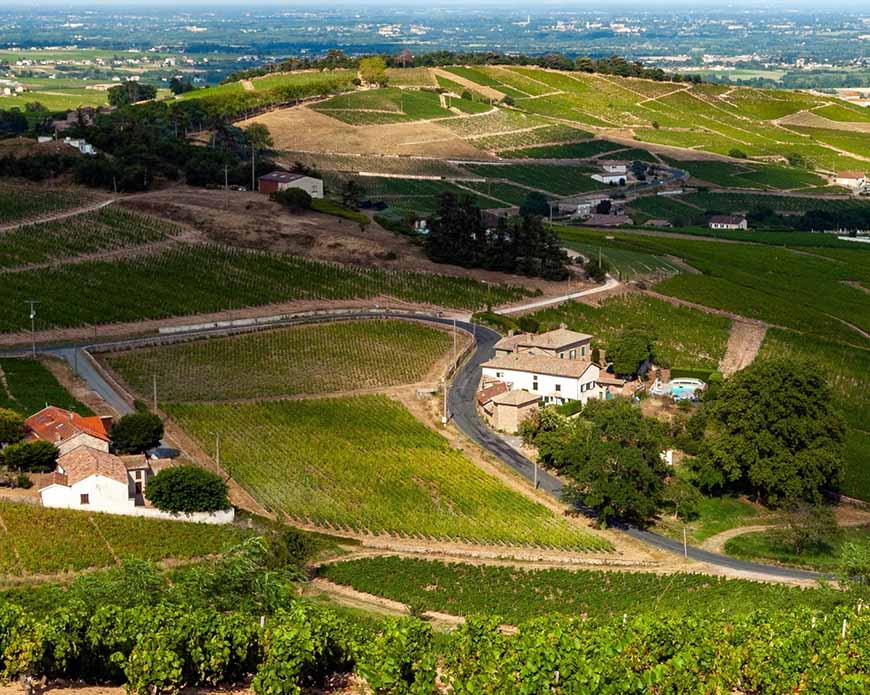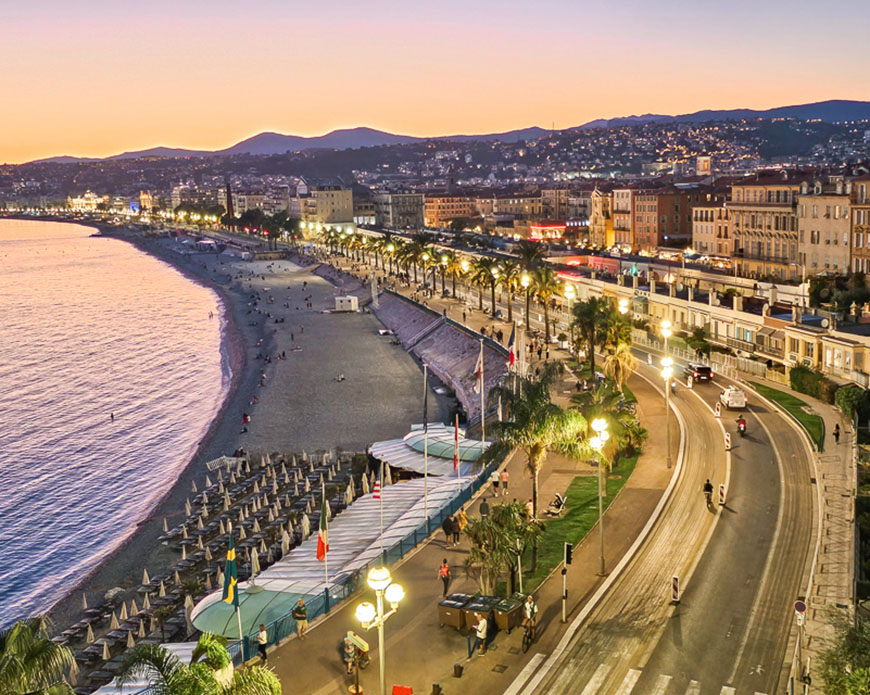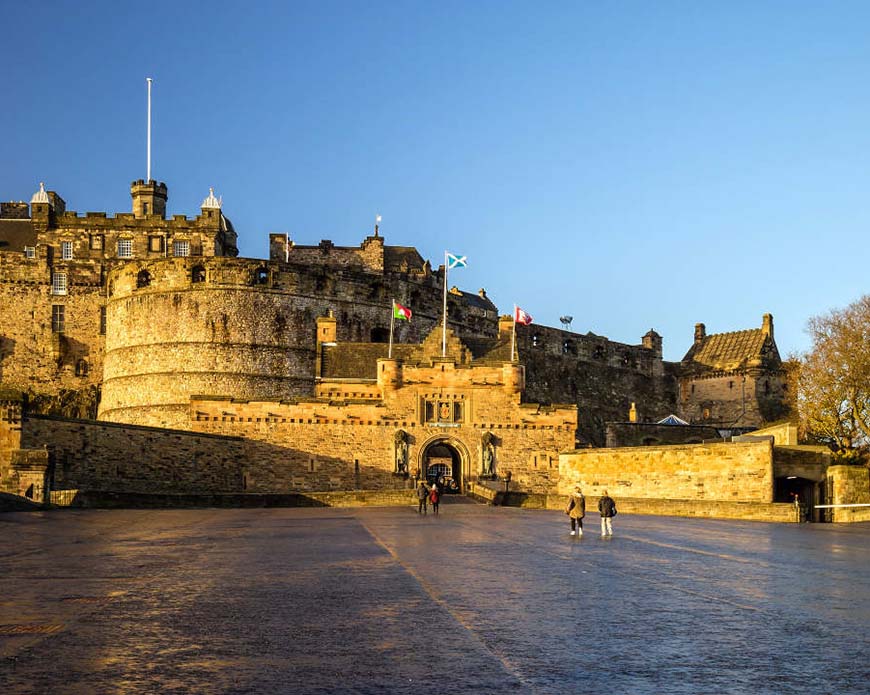1. Arrival Beneath the Sleeping Giants
The first breath of Clermont-Ferrand carries with it a clarity unfamiliar to city dwellers. Even before the eye adjusts to the gentle curvature of the surrounding hills, the air announces the presence of something older than time and richer than imagination. The Chaîne des Puys, the dormant chain of volcanoes, rises beyond the horizon, each silhouette a quiet testament to the raw power of the Earth’s geological past.
Volcanic soil darkens the ground beneath my feet, an ink-black reminder that this is no ordinary mountain range. These peaks were forged in fire, not uplifted by tectonic grace. Puy de Dôme, the most iconic of them all, stands with the poise of a retired warrior—still, yet brimming with story. Its rounded top invites the curious to ascend, not merely to witness a view but to encounter a living relic.
2. Puy de Dôme: A Summit Bathed in Sky
The climb to Puy de Dôme can be accomplished by foot via the Chemin des Muletiers, an ancient mule path winding in gentle spirals up the flanks of the volcano. With each step, the terrain unfolds a different personality: open grasslands give way to volcanic scree, pinewoods blur into alpine meadows, and then, at last, the summit. The panorama from above humbles even the most seasoned traveler. The Allier Valley lies like a green river of quilted farms, and to the north and south, the other Puys march like a basaltic army, frozen mid-campaign.
The TDF (Téléphérique du Puy de Dôme) cable car offers a gentler ascent. Its glass-walled cabins present a slow-moving cinematic reveal of the terrain, a ballet of topography and light. Upon reaching the top, the ancient Roman temple of Mercury waits with fractured dignity, a place once devoted to gods who ruled over trade and travel—a fitting irony for modern pilgrims.
3. Lakes in the Cradle of Fire
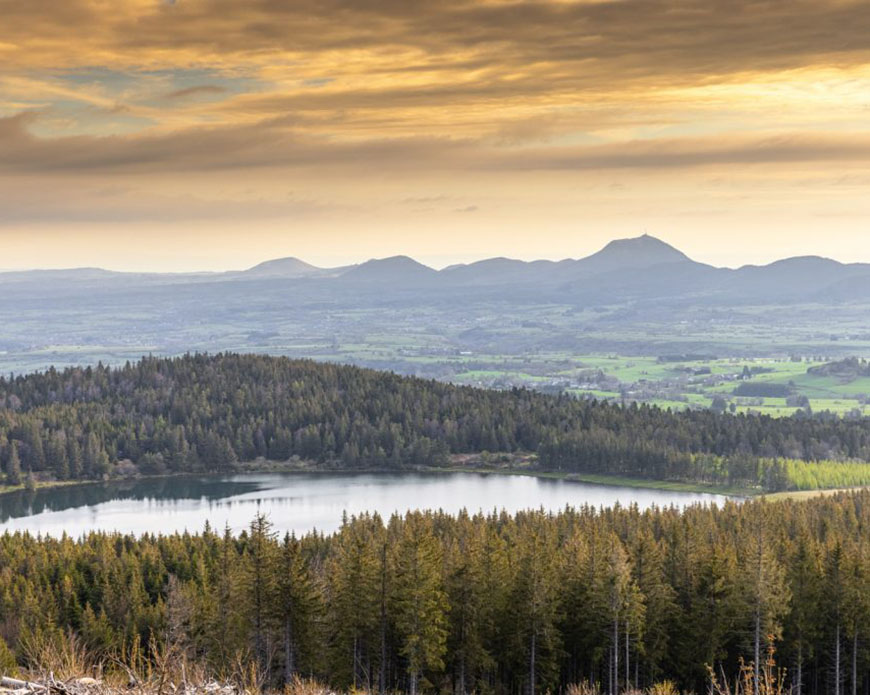
The volcanic origins of this region did not only sculpt mountains. They carved out basins, which over centuries filled with rain, snowmelt, and the tears of the sky, becoming some of the most enchanting lakes in France. Lac Pavin, with its near-perfect circular shape, is perhaps the most mysterious of them all. Born from a phreatomagmatic eruption—an explosion of water and magma—its waters are deep and opaque, almost black in places. Local folklore speaks of spirits beneath its surface; science tells of meromictic layers that never mix.
Morning mist drifts lazily over the lake, and the air carries the earthy scent of moss, stone, and pine. A narrow trail circles the water’s edge, where each curve of the path brings a new perspective—reflections of fir trees ripple with the breeze, and sudden clearings reveal the glint of light upon obsidian water.
A short drive away, Lac d’Aydat offers a gentler experience. Larger and shallower, it draws families and sunseekers in summer, with grassy banks and watercraft gliding across its mirrored surface. Canoes slip through patches of morning fog, their paddles stirring the water with a rhythmic hush. Birdsong from the surrounding trees accompanies the gentle lapping of waves on the shore.
4. Valley Roads and Secret Passes
Driving through the Parc Naturel Régional des Volcans d’Auvergne is an experience painted with cinematic brushstrokes. Hairpin turns lead to narrow valleys where medieval villages cling to slopes, each stone cottage whispering tales of snow-blanketed winters and harvest-season revelries. The roads themselves seem in conversation with the terrain, never cutting it but caressing it, as though aware of the history beneath their asphalt veins.
The Col de la Croix-Morand, a high mountain pass between Mont-Dore and Chambon-sur-Lac, offers views that change with every breath. One side offers rolling pastures where Salers cattle graze with aristocratic indifference, their mahogany coats catching the afternoon sun. The other side tumbles down into dense woodland, where trails disappear beneath cathedral-like canopies.
Small chapels appear unexpectedly along these routes—weather-worn, but still standing with stoic grace. Each one marks a memory, a storm weathered, a life remembered. No journey here is without its moment of stillness, a kind of reflective hush that descends with the realization that these landscapes have seen generations come and go.
5. The Sancy Massif: Where Sky Meets Stone
To the south, the Massif du Sancy rises higher than its volcanic cousins. At 1,886 meters, it is the highest peak in central France, and it commands the skyline with authority. Reaching the summit of Sancy involves a cable car to the station at 1,600 meters, followed by a well-maintained path and stairway. The final ascent, though steep, is invigorating, with the wind growing more insistent as elevation climbs.
From the top, the land reveals its true character—mountains dissolve into plateaus, plateaus bleed into valleys, and the lakes appear again like polished sapphires set in green velvet. The Dordogne River has its birthplace here, trickling from snowmelt before beginning its long, winding journey to the Atlantic. High-altitude flora cling to life between the rocks: wild thyme, edelweiss, and gentian bloom in resilient clusters, echoing the fierce endurance of the Auvergnat spirit.
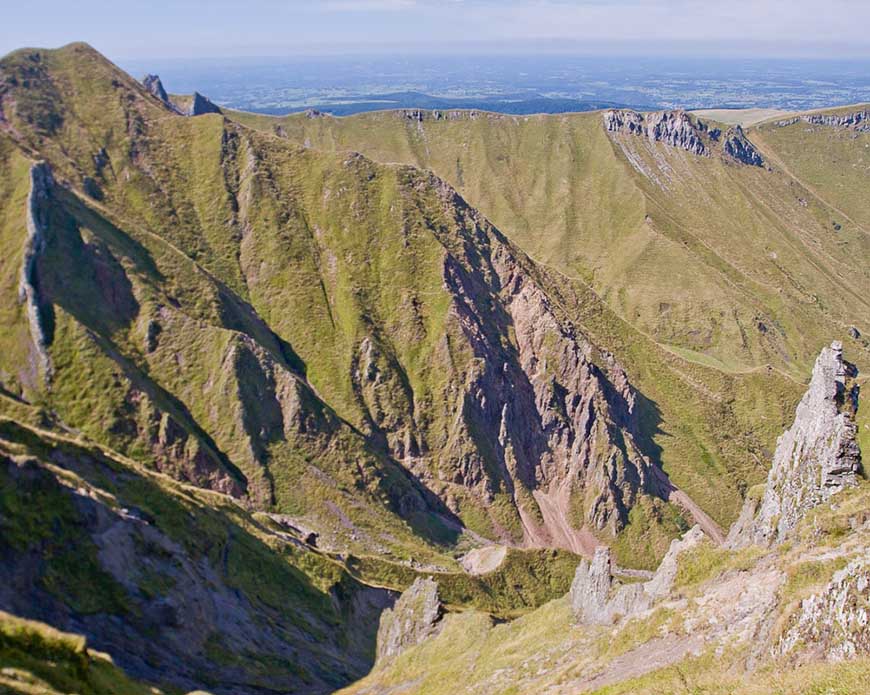
6. Rainfall, Silence, and the Language of the Landscape
Weather here behaves with mountain logic. A bright morning may give way to mist by noon, and then clear again by late afternoon. Rain falls not with vengeance but with rhythm. There’s a certain reverence to it—each drop a baptism for the stones, a lullaby for the grass. Paths glisten with rain-slick lichen, and the leaves drink deeply.
There are moments when silence dominates. Not the absence of sound, but the presence of quiet. No engines, no sirens—only the rhythmic percussion of feet on gravel, the rustle of wind in trees, the rare creak of an old fence leaning into its third century. It’s in this hush that the landscape speaks most clearly. One begins to understand that here, nature is not a backdrop. It is the protagonist.
7. Evenings by the Water’s Edge
As dusk approaches, the mountains trade their sharp lines for shadows, and the lakes turn to mirrors of liquid ink. Villages like Besse-et-Saint-Anastaise, Murol, and Orcival settle into their cobbled calm, the windows of their homes glowing like hearths from within. Bells toll slowly from ancient belfries, not to mark the hour but to measure the soul of time.
By the shores of Lac Chambon, the evening air thickens with the scent of woodsmoke and wildflowers. Fishermen cast lines into the still waters, more for the pleasure of the act than for the hope of a catch. Children chase fireflies while their parents sip Auvergne wine under the fading sky. The stars, when they arrive, do not blink—they burn steady and strong, as though accustomed to their nightly role in this eternal performance.
8. A Living Geography
No map can truly express the depth of character in Clermont-Ferrand’s natural surrounds. Contours may be drawn, elevations recorded, but the emotional terrain defies measurement. Each mountain holds a different silence. Each lake stores a different sky.
Even the volcanic stones in the city’s old quarters reflect this geography. Built from the same material as the surrounding Puys, the architecture seems born of the land, not imposed upon it. Black lava stone lends gravitas to the cathedral, dignity to fountains, and texture to every winding street. The city’s very foundations are inseparable from the natural world that cradles it.
9. Beneath the Surface, the Story Continues
Geologists say that the Chaîne des Puys is dormant, not extinct. Deep underground, forces continue to stir. This latent energy does not threaten—it enlivens. There’s a peculiar serenity in knowing that creation is not complete. The land is still dreaming, still evolving.
The lakes, the mountains, and the sky all conspire to remind visitors of something older than convenience, older than even memory: the enduring intimacy between land and time. Here, nature does not entertain—it reveals.
